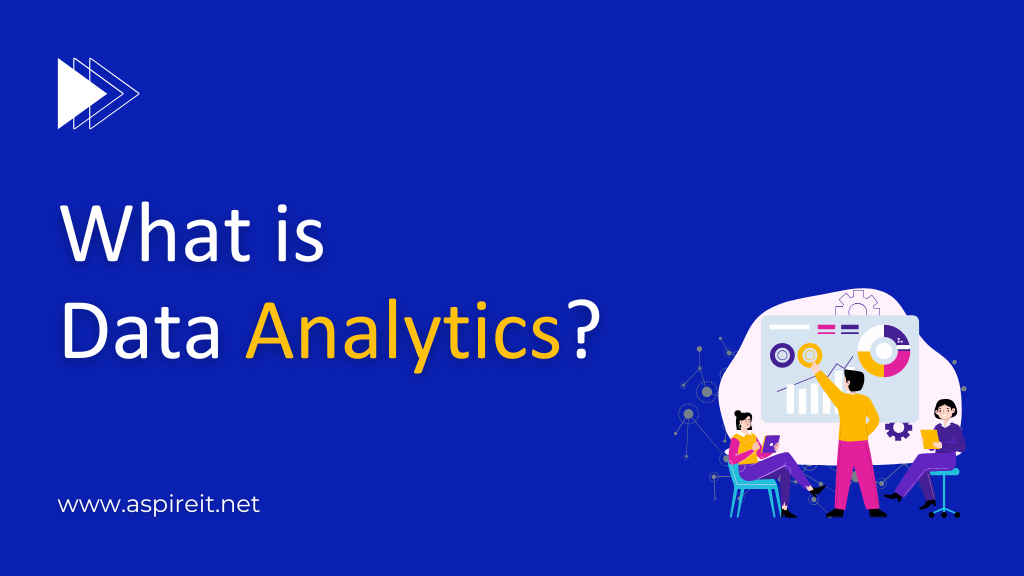What is Data Analytics? Types and Benefits Explained for Beginners

What is Data Analytics? Types and Benefits Explained for Beginners
Data Analytics
Data Analytics and Data Analysis Both are not the same. Many times, people misunderstand that both are the same.
To discuss Data Analytics, a company or business is more focused on the future rather than explaining past results. This includes making sense of data analytics using algorithmic analytics as well as statistics. That means paying attention to future things. Analytics includes finding important information in stored data and all related activities.
Data Analytics is the process of exploring real-world data to make future-proof decisions using key insight tools. Data analytics provides accurate data understanding and insights to improve future operations.
Data Analytics helps organizations gain greater visibility and insight into improving their operational processes and services. This provides insights into customer experience and customer issues. Data Analytics allows companies to create personalized customer experiences, shifting the paradigm beyond data to gain insights. Create relevant digital products, optimize operations, and increase employee productivity.
An important step in data analytics is advanced analysis. It leverages advanced analytics tools to extract data, predict data, and discover new trends in the market. These tools include statistics and artificial intelligence, and machine learning. Technologies in Machine Learning, such as neural networks, natural language processing, sentiment analysis, and more enable more advanced analytics. Data Analytics makes information sharing faster and gaining insights easier.
In recent times, the availability of Machine Learning technology has increased due to Data Analytics. Large data sets and computerized systems have made it easier to use this technology in many industries. The collection of big data sets is essential to enable this technology, as Big Data Analytics gives companies the insight to draw meaningful conclusions from complex and disparate data sources.
Browse the course link: Data Analytics
Data Analytics Types
- Predictive Data Analytics
Predictive Analytics is considered a form of predictive analytics and relies on Machine Learning. Predictive Analytics Techniques such as statistical analysis and forecasting help businesses make predictive predictions.
Predictive analysis is about answering the question of what will happen in the future. These techniques use historical data to identify new trends in the market and determine if they are likely to recur. Includes statistical and machine learning technologies to gain insights into predictive analytics, such as neural networks, decision trees, progression, etc.
Predictive Analytics gives a company the insight to predict all kinds of outcomes. For example, Predictive Analytics is important for predicting how much a company's production will increase or decrease in a given period of time.
- Prescriptive Data Analytics
Prescriptive Analytics combines Artificial Intelligence and Big Data to help identify what actions to take to predict outcomes. The analysis in this can be divided into optimization and random testing. Machine Learning can help answer all the questions in Prescriptive Analytics, such as how to test the right variables and the best course of action that will lead to positive results, using predictive analytics.
Prescriptive Analytics enables data-driven decisions using predictive insights. Prescriptive analytics techniques rely on machine learning strategies to find patterns in large databases. Also, by analyzing past decisions and events, the probabilities of outcomes can be easily predicted.
Prescriptive Analytics takes into account everything, such as what test and technique should be used to get the best results, so that the desired results are achieved. Prescriptive Analytics uses machine learning algorithms and business rules.
- Diagnostic Data Analytics
Diagnostic analysis focuses on data identified through qualitative analysis to find performance factors, specific trends, or results behind the diagnostic analysis. If a business or company is facing negative data, such an analysis can help to find out the main reasons behind the decline and act accordingly.
Diagnostic Analytics, although not as exciting as predicting the future, analyzing past data can serve an important purpose in guiding your business. Diagnostic Analytics is a process of examining data using techniques like drill down, data discovery, and data mining.
- Descriptive Data Analytics
Descriptive Analytics diagnoses data and looks for any trends, problems, or causes in situations. If a company is facing any negative data, then such analysis will help them to find the root cause of the decline in performance, and decisions and actions can be taken against it.
In Descriptive Analytics, past data is crucial for detecting trends, such as monthly revenue, website traffic, and other key metrics. Also, this type of analysis uses arithmetic operations, mean, median, percentage, maximum, and other statistical summaries.
Data Analytics Benefits
- Informed Decision-Making
- Improved Business Performance
- Better Customer Understanding
- Cost Reduction
- Increased Revenue
- Risk Management
- Real-Time Insights
- Performance Monitoring
- Innovation Enablement
- Compliance and Reporting
To Join our FREE Data Analytics DEMO Session: Click Here
Get More Information